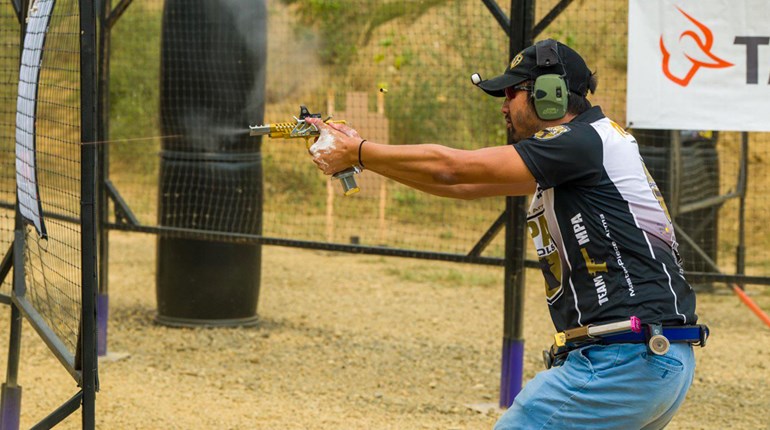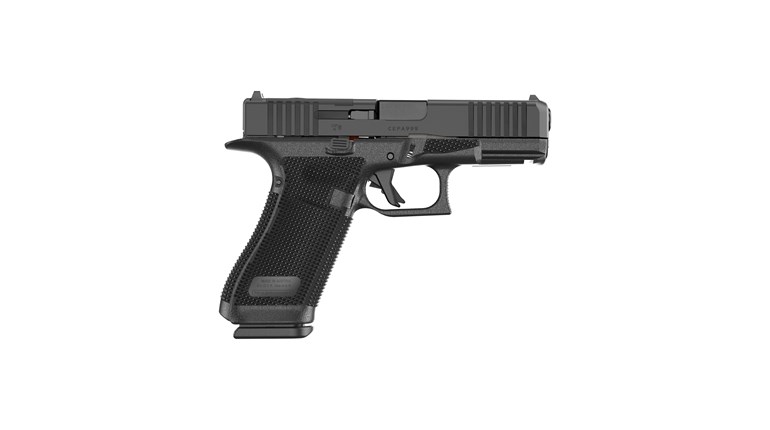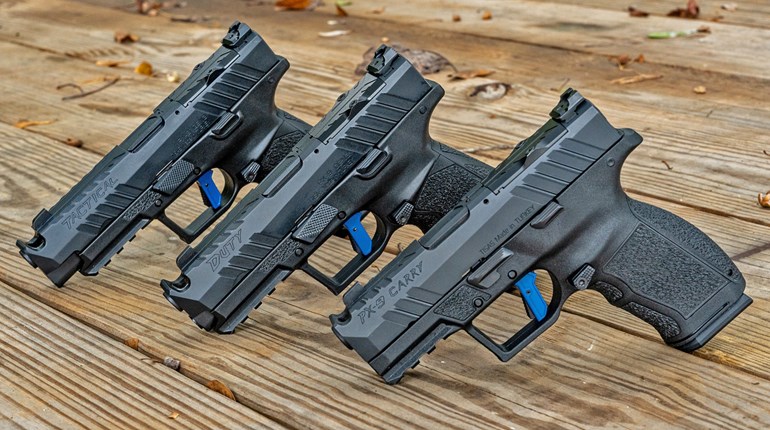
We’ve determined that we are obsessed. Just back from USPSA Optics Nationals, perhaps you can understand and pardon our affliction, at least a little. The upside is we’ve got another project that you’ll be able to pick over, and maybe move something of your own along. We’ll have plenty of fun, at any rate.

Open Division guns are the apple of our (mercurial, we admit) eye, as the old saying goes. By just about any measure, they’re the edge of pistol engineering and development, and intentionally so. Handgunning’s test bed, if you will, as USPSA’s President Mike Foley explains here.
Glamorous as they are, these thoroughbreds can have drawbacks. Without going too crazy—“full-up” Open guns and their kit can make a mighty fine hole in $4,000—it perhaps explains why the guys at Dawson Precision, say, seem strangely reticent to pack us off with a 2011 DVC Open gun at the moment. (In fairness, we note the Dawson guys actually take great care of us, but when you can whine at our level of expertise, it’s hard not to.)
The same fine-tuning that makes Open pistols run like scalded cats tends to make them, well, fussy. If that weren’t enough, unusual calibers, weight and somewhat-less-than-snag-free profiles contribute to limited appeal for what anyone would call “field” use. Perhaps a prime illustration of the intricacies may be to watch how Open gunners treat their magazines: Most will clean these gargantuan feeding devices after every single contact with the ground, inside and out. At $100-plus bucks apiece, can you blame them?
So while operations may be more challenging, the appeal is unmistakable: These bad boys can run incredibly fast (USPSA Grandmaster Jessie Duff here, for instance), especially in practiced hands. A quick squint at this may make our point with equal facility: Even in the ultimate go-fast match, 16 of the top 20 spots still went to Open division pistols; new-guys-on-the-block PPC (Pistol Caliber Carbine) and Carry Optics didn’t crack the top 10. Granted, the divisions don’t compete directly even when shooting the same courses of fire, but the fact remains: Open guns produce disconsolate dust-eaters in ghastly numbers.

As we think we’ve conceded before, neither we nor our any of our guns are that fast, even when we’re dreaming.
These considerations may also beg the question, “So, why ‘First Gear’?” Naturally, we think we have a mildly ingenious answer: While a fabulous SVI or Limcat may be a leap for the first time out, you may find you have an experimental platform sitting in your safe right now. Test-drive a darn nice Camaro, say, before you flop down Ferrari-type green?
As it happens, some clever guys at Jager Products have had this sorted out for a long time.
If you’re a Glock fan—and we are—Jager has conversion kits that will get you surprisingly close to an Open gun at about 15 percent of the investment. And if “surprisingly close” sounds suspiciously like weasel words, let us be clear: A Jager conversion works, and very, very well, but we’ll caution anyway—don’t expect a $500 pistol with $300-600 of conversion parts to do the job of a wide-body, hand-fit juggernaut like those above.
We’ll be building one in First Gear over the next few weeks, and run it down for you as we did with our Light/Short MSR build.
We’re starting with a favorite—a Gen4 Glock G-17 MOS already on hand. A descendent of the 1984 original, it brings a lot to an Open build: Reliability and serviceability are core, familiar attributes, but rugged and readily available magazines are another. Where Jager’s kit doesn’t supply, a vast array of other vendors stand ready with internal and external upgrades or aftermarket parts. These figure greatly in getting to the sort of trigger an Open gun needs (light, fast and reliable), or magwells for those lightening reloads. These last you should still practice, by the way, even though round counts well over 20 mean you won’t need them much.
At the heart of an Open pistol, however, are the optics and compensator. With our MOS pistol, we get a very handy shortcut: Optic mounting is just the proper conversion plate away, and we’ll pick the sight a little down the road. If the whole red-dot thing is a bit out there still, this or this may provide a little catch-up reading.

Compensators, on the other hand, may smack a little of terra incognita—unknown country. In principle, they’re easy. Using a series of baffles and vents, comps strip combustion gas from behind the bullet, and vent it in ways that keep the muzzle substantially close to flat. It’s a surprise to many folks that Open-style comp’d guns aren’t recoil-free. Uncle Isaac (Newton), we sadly aver, dictates this energy has to go somewhere, and a comp’s job is to redirect usefully, rather than to actually eliminate. As a practical matter, we think there is still relative reduction, but that gets subjective in a hurry. The point remains: Properly executed, compensators keep the aiming cue on target very well indeed, and that translates to speed.
In case you’re wondering why you can’t just slap a comp on any old gat and get to work, here’s the rub: If you can devise a safe attachment method (tricky in itself), rock on. But the likelihood it’ll be any real improvement is somewhere betwixt “small” and “none,” and safety issues remain. (In other words, don’t!) There’s a tuning process that takes into account slide mass, recoil spring rate, caliber, comp port configuration, bullet mass and velocity, and gas volume in an obviously sophisticated dance. Getting it to be effective is the stuff of actual science, in other words. But go ahead; wing it. Bwahahahahahaha.
So stand by, you DIY types. First Gear and Jager are launching an Open gun project!
Frank Winn has been studying arms and their relationship to tyranny, meaningful liberty and personal security all his adult life. He has been a firearms safety/shooting instructor for more than 20 years, and earned state, regional and national titles in several competitive disciplines.

































